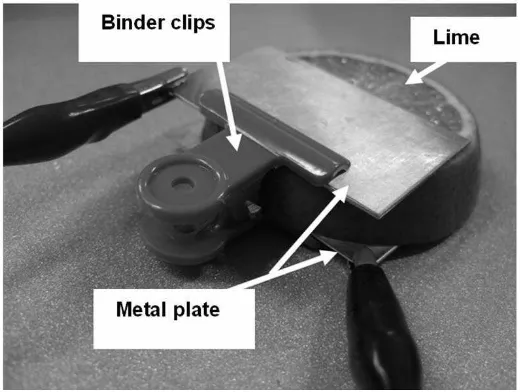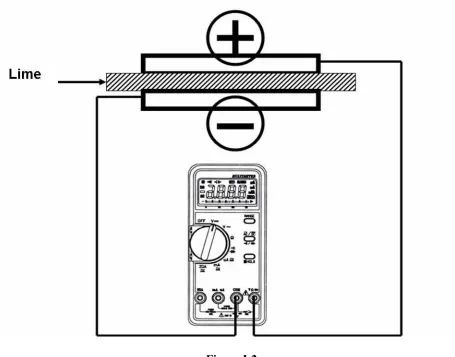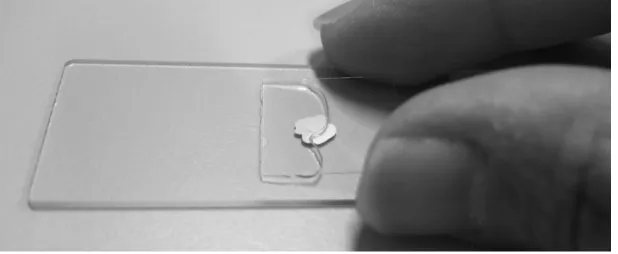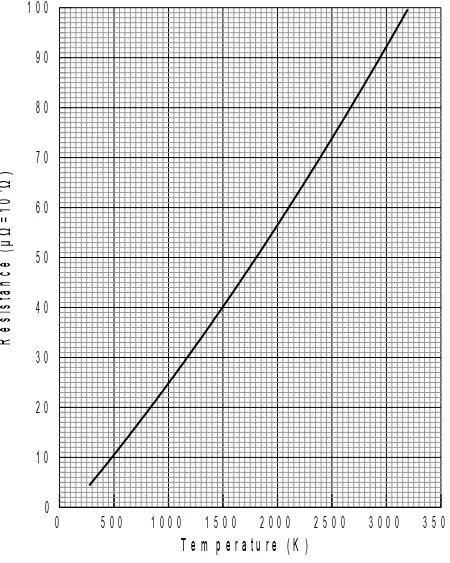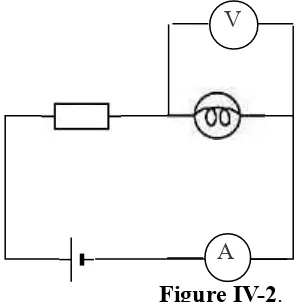4
th
International Junior
Science Olympiad
Practical Examination
Important Remarks
1. While you are in the laboratory, you should wear safety spectacles at all times.
2. Eating of any kind of food is strictly prohibited in the laboratory. If necessary you may ask Lab Assistant and take a snack break nearby the laboratory.
3. The safety showers are located inside the bathroom on both side of the stage.
4. Participants are expected to work safely, to behave socially and to keep equipment and work environment clean. When carrying out discussions with your teammates, keep your voice low.
5. Do not leave the examination laboratory until you have permission to do so. Ask Lab Assistant if you need to use the bathroom.
6. Work may only begin when the start signal is given.
7. You have 4.5 hours (including extra 30 min reading time) to complete the experimental task, and record your results on the answer sheets. There will be a pre-warning 30 minutes before the end of your time. You must stop your work immediately after the stop command is given. A delay in doing this by 5 minutes will lead to zero points for the task.
8. Be sure that your team has a complete set of the experimental examination (3 copies) and the answer sheets (4 copies). Only one copy (light yellow paper) of the answer sheets should be submitted for marking.
9. Use only the pen and calculator provided.
10. Team code and student codes must be written on every page of the final answer sheets. Each team member must sign on the front page of the final answer sheets.
11. All results must be written in the designated boxes on the answer sheets. Data written elsewhere will not be graded.
12. After completing the task, put all the equipments back to its original place and discard all solutions in the beaker labeled “Waste”.
A. Introduction
Energy is essential in our everyday life. Electricity is one of the forms of energy that is
easily obtained in modern society. To produce and convert electricity efficiently is one of the
most important issues in the 21st century. In this task, you will construct a chemical battery, find
out how electrolytes affect the current, and assess how well (or poorly) natural products conduct
electricity. Electricity can be utilized to promote light, heat, and chemical reactions. You will
connect commercial batteries to a system to initiate electrolysis and initiate a chemical process.
Heat is an unwanted byproduct upon the conversion of electricity to light. You will determine
the temperature of an incandescent lamp.
B. Objectives (They are not necessarily to be solved in sequence.)
I. To study the characteristics of a fruit battery and to determine the factors that influence the efficiency of the fruit battery.
II. To observe the starch particles in potato and to determine how chemical reagents affect them.
III. To assess the relationship between the concentration of an electrolyte and the conductivity of an electrolysis cell. To determine the concentration of an electrolyte solution from the concentration-conductivity relationship and by acid-base titration.
C. Apparatus and Materials
Connecting wire 6 Scissor 1
Metal plate 1 set (A, B, C, D) Binder clips 6
LED device 1 Knife (For Part I & II) 1
Wash bottle 500 mL (in common basket)
1 Paper towel (in common
basket)
1
Latex glove (wear all time for Part I, and III)
Potato 1 Cover slip, Slide 1 set
Microscope 1 set Iodine solution(1%) 1
Knife (in Part I basket) 1 Reagents (labeled with
A, B & C)
3
Part III: Conductivity of electrolyte solution
Apparatus Quantity Apparatus Quantity
Multimeter (in common basket) 1 Burette holder and rack 1
Connecting wire 4 Burette 50 mL 1
Battery set (3V, for this Part only)
1 Funnel 1
Pt electrode 2 Erlenmeyer flask 125 mL 3
Plastic test box 2 Test tube 2
Beaker 600 mL 1 Graduated cylinder 50 mL 1
400 mL 1 10 mL 1
100 mL 4 Dropper 10
Forceps 1 Label 1
Latex glove (in common
basket)
1 Towel (in common basket) 1
“Waste” beaker 1000 mL (in common basket)
1 Wash bottle 500 mL (in common basket)
1
*More distilled water are available. Ask Lab Assistant.
*You should wear gloves at all time. In case of skin contact with acid or base, wash with distilled water immediately.
*All glass wares provided are clean, and there is no need to wash before experiments. However, if necessary, you may clean them with a wash bottle and transfer the waste to a beaker labeled “Waste”.
*Keep the battery box on the “off” position when not in use as shown below.
Part IV: Energy Transfer Associated with an Incandescent Lamp:
Apparatus Quantity Photo #
Battery set (6V, for this Part only) 1 Photo IV-1
Light Bulb 1 Photo IV-2
Resistors 9 Photo IV-3
Connecting wire 6 Photo IV-4
Thermometer (fixed on the partition. Read only, don’t touch)
1 Photo IV-5
Multimeter (in common basket) 2
Photo IV-1. Battery set: The voltage is 6 V. There are two leads, positive and negative, colored red and black, respectively. The battery set will
be represented by the circuit symbol .
Photo IV-2. Incandescent light bulb set. This light bulb set has two leads for connection. The light bulb set will be represented by the circuit
symbol .
Photo IV-3. Resistors. Each is labeled with power rating (10W), Resistance (~ Ω), and Type (J). The resistor will be represented by the circuit symbol
Photo IV-4. Connecting wires. Two types of wires are provided: alligator- alligator and alligator-banana.
Wire connection and dial setting for using Multimeter
Measure Voltage:
In Part IV, you have to use 20 A setting for measuring current. Incorrect dial setting and wiring of multimeter will cause damages and no points will be given.
D. Experiments and Questions
Part I: Fruit Battery
Batteries contain two electrodes which typically consist of different kinds of metals, and are filled with electrolyte to produce electricity from the chemical reactions between the electrodes and the electrolyte. Instead of chemical batteries, fruits can also be utilized to generate
electricity. Fruits contain lots of juice (electrolyte) which could ionize electrodes, the ionization tendency of which depends on the kind of metals and fruits. Questions I-1~I-3 are assigned to assist you to determine the characteristics of the fruit battery.
Question I-1: Determine how the electrodes affect the fruit battery
Procedures:
1. Use lime to complete this experiment. The thickness of the lime between the two electrodes should be limited to no more than 1 cm as shown in Figure I-1.
2. Use metal B as the positive electrode (+) and metal A, C and D as the negative electrode (-) in different setups, measure the voltage generated by these fruit batteries. Wire connections are shown in Figure I-2.
Figure I-2
3. According to your results, answer Question I-1-a and I-1-b.
I-1-a. Use metal B as the positive electrode, which metal on the negative electrode gives the highest voltage.
I-1-b. According to your observations, answer the following questions.
i. If metal D and A were utilized as the electrodes for the fruit battery, which one is the positive electrode?
Question I-2: Determine how different variables affect the fruit battery
Procedures:
1. Use metal B as the positive electrode (+) and metal C as the negative electrode (-) to assemble the fruit battery.
2. Read Question I-2-a and I-2-b before proceeding with the experiment.
3. Design your own experiment to answer the question I-2-a and I-2-b.
Use “↑” to represent increase, “↓” to represent decrease, and “−” for no change (less than
20%) in answering Questions I-2-a and I-2-b.
I-2-a. Decrease the contact area (at least 3 times) between the metals and the fruit and observe the voltage (V) and current (µA) generated by this battery.
Question I-3. Based on the characteristics of fruit battery, design the simplest device to light up the LED device and answer the following questions:
Hints: A light-emitting diode (LED) is a semiconductor device that emits narrow-spectrum light when it is driven electrically biased in the forward direction of the p-n junction. This effect is called electroluminescence. Current flows easily from the p-side (+) to the n-side (-) of LED,
but not in the reverse direction. The electroluminescence will not occur otherwise.
**Write down your LED device number on your answer sheet**
Set up your own experiments to solve the following problems
I-3-a. If a single positive and negative electrodes is used to create the battery unit, how many units are required (the minimum number) to light up the LED device?
I-3-b. Identify the metals chosen for the positive and negative electrodes.
I-3-c. What is the color of the LED luminescence? (Abbreviation: red (R), green (G), blue (B), white (W))
When the LED luminesces, raise your hand to inform the Lab Assistant, who will confirm
Part II: Starch Granules
There are many substances produced during cell metabolism, such as starch granules, lipids, and crystals. Starch, a polysaccharide, is the major storage substances produced by
photosynthesis and is the major source of cellular energy. In plant cells, the starch aggregates to form starch granules. The morphology of the starch granule depends on the species of plants. Amylase (an enzyme which could digest starch) is highly abundant in living organisms. After digestion by amylase, the starch will convert to maltose. Questions II-1~ II-2 are designed to assist you to observe the structure of starch granules and to determine the effects of three reagents on it.
Using a bright field microscope
Mount the specimen on the stage Turn on the light, optimize the lighting
Adjust the iris diaphragm.
Think about what you are looking for
Focus, locate, and center the specimen
Adjust eyepiece separation, focus
Select an objective lens for viewing
Adjust illumination for the selected objective lens
Question II-1: To observe the structure of starch granules in potato
Procedures:
1. Use the knife to cut the potato and scrapesome potato juice (extract) on the slide.
2. Add one drop of 1% iodine solution on the potato juice. Mix them well to stain starch granules as shown in Figure II-1.
Figure II-1
3. Put the cover slip on your slide as shown in Figure II-2.
Figure II-2
4. Use paper towel to remove the excess iodine solution along the cover slip.
microscope on your answer sheet.
Question II-2: To determine reactions of reagents on starch granules
Procedures:
1. Use the same procedures of Question II-1 and prepare three more potato starch granules slides.
2. Label the potato slides as sample A, B, and C.
3. Put the slide on the microscope stage and use the adjustment knob to look for the starch granules.
4. Add one drop of reagent Afrom one side of the cover slip into the sample A
as shown in Figure II-3.
Figure II-3
5. Observe the changes of the potato starch granules on the reagent dropped side by microscope during the first minute.
6. Repeat steps 5 and 6 by using reagents B and C on samples B and C; respectively.
7. Answer Questions II-2-a, II-2-b, and II-2-c. Reagent A or
B or C
II-2-a. After adding the reagent A, the potato starch granules were
(A) unchanged (B) swollen only (C) swollen to lyse (D) shrinked
II-2-b. After adding the reagent B, the potato starch granules were
(A) unchanged (B) swollen only (C) swollen to lyse (D) shrinked
II-2-c. After adding the reagent C, the potato granules were
Part III: Conductivity of an Electrolyte Solution
Metals are good conductors. Some compounds are also good conductors while dissolved in water, such as sulfuric acid, sodium hydroxide, and nitric acid. We name this type of molecules “electrolytes”. Aqueous solution of sucrose or alcohol do not conduct electricity, therefore, they are not electrolytes. It is clear that the physical properties of the molecules determine the conductivity of their aqueous solutions. In this experiment we shall determine the effect of concentration on the conductivities of a given electrolyte. The conductivity of a solution is proportion to the current at constant voltage. In this experiment we measure the current to denote the conductivity.
There are three parts in this experiment. In III-1, sodium hydroxide solutions were utilized to test the effect of concentration on the conductivity of these solutions. You need to plot the results and figure out the relationship between conductivity and the concentration of the electrolyte. In III-2, a sodium hydroxide solution of unknown concentration will be given, and you have to measure the conductivity and figure out the concentration by interpolating from the data in the correct figure you plotted in III-1. In III-3, the conventional titration method will be used to determine the concentration of the same unknown sodium hydroxide solution.
Question III-1: The relationship between sodium hydroxide solution concentration and
conductivity
Procedures: ** Record all your data on the answer sheets**
1. Use the 0.5 mol∙L-1 NaOH
(aq) solution provided and the graduated cylinder to prepare 50.0
mL of each of 0.35, 0.25, 0.12, and 0.06 mol∙L-1 of NaOH
(aq) solutions. Transfer the solutions
into 100 mL beakers for later use.
3. Measure out 5.0 mL of 0.06 mol∙L-1 NaOH
(aq) solutions and pour into the plastic box. The
solution should not reach the alligator clamps. Make sure all connections are correct then switch the battery box to the “on” position and start counting time. Record the current reading at 30 seconds after switch on.
III-1-a: Record your data in the appropriate place.
4. Repeat step 3 with other NaOH(aq) solutions and record the data.
III-1-b: Plot (a) concentration (in mol∙L-1) v.s. square root of current (in
mA ),
(b) square root of concentration (in mol⋅L−1 ) v.s. current (in mA), and
(c) square root of concentration (in mol⋅L−1 ) v.s. current square (in (mA)2) on graph papers in the answer sheets.
III-1-c: Which of the plots in III-1-b is the best approximation of a straight line?
Question III-2: Determine the concentration of a NaOH(aq) solution by using conductivity
measurements
Procedures:
1. Measure out 5.0 mL of NaOH(aq) solution with unknown concentration, and pour into plastic
box.
2. Perform the measuring procedures.
3. After completed all the current measurements, rinse the Pt electrodes and put them back in their bag. Return it to the Part III basket.
Question III-3: Determine the concentration of a NaOH(aq) solution by using acid-base
titration
Procedures:
1. Take 5 mL of 0.25 mol∙L-1 HCl solution into a test tube. Add a few drops of the indicator and
keep it for titration endpoint comparison.
2. Take 5 mL of 0.5 mol∙L-1 NaOH solution into a test tube. Add a few drops of the indicator
and keep it for titration endpoint comparison.
3. Pour HCl solution into the burette.
4. Measure 20.0 mL of the unknown concentration of NaOH solution into a 125 mL Erlenmeyer flask and add a few drops of indicator.
5. Use HCl solution to titrate.
III-3-a: Record the volume used.
6. Repeat steps 4 and 5 as many times as necessary, and calculate the average volume.
Part IV: Energy Transfer Associated with Incandescent Lamp
The conductivity (or resistance) of a material will not only vary with the carrier
concentration but also vary with temperature. Materials with properties such as volume, color,
resistance that vary with temperature may be used as temperature indicator. The temperature
scales are different in various professional communities. The most commonly used temperature
scales are Celsius and Kelvin as listed in Table IV-1.
Table IV-1: Two commonly used temperature scales.
Name Symbol Unit Relationship
Celsius TC °C TC =TC
Kelvin is commonly used in scientific data recording and analysis. For example, Figure IV-1 shows the resistance versus the temperature of a IV-1 cm tungsten cube (the cross sectional area is 1 cm2). The vertical axis is the resistance of the tungsten cube with the unit of µΩ = 10-6Ω, and
the horizontal axis is the temperature in Kelvin.
IV-1. Read the room temperature from the thermometer. Record your data in Celsius. What is the room temperature in Kelvin?
IV-2. Use the multimeter to measure the room temperature resistance of the tungsten filament in the light bulb.
The circuit symbol used in this part is given in the Table IV-2
Table IV-2: Circuit symbols.
Device Light bulb Battery Resistor Ampere
meter
Volt
meter
Symbol
Connect the battery box (6 V), the light bulb, and the largest resistor as illustrated in the circuit diagram of Figure IV-2. The current (I) and voltage (V) of the filament in the bulb may be measured by multimeters with correct dial setting and wiring.
A V
IV-3. You may change the resistor to vary the voltage and current of the light bulb. A data point without a resistor (zero resistance) should be recorded. At least 10 data points are required. Write the data set (I, V) in the answer sheet. Make sure you record and calculate every data to two digits after the decimal point.
IV-4. From the measured (I, V) data, calculate the resistance R and the electric power Pof the light bulb corresponding to each pair of voltage V and current I , and fill them into the data table in the answer sheet.
IV-5. Use your data and figure IV-1 to obtain the temperature (T) in Kelvin of the tungsten filament in the light bulb corresponding to each pair of voltage V and current I . Record all the calculated results in the data table of the answer sheet.
Hint:
As shown in the magnified picture below, the dimensions of the tungsten filament in the light bulb are quite different from those of the tungsten cube described in the Introduction.
IV-6. Calculate the logarithm of value of the power log(P) and the logarithm of temperature )
log(T , and fill them into the data table in the answer sheet.
IV-7. Plot the logarithm of the electric power, log(P), versus the logarithm of the
The tungsten filament can transfer its energy to the environment through three channels. They are conduction, convection, and radiation. The powers of energy transfer are the
conduction power,PCD, convection power,PCV , and radiation power,PRD , respectively.
Two of the energy transfer channels, the conduction and convection, are mediated through matters, and their total power is proportional to the temperature difference, ∆T =(T −Te),
between the filament temperature (T ) and environment temperature (Te ). While the energy
transfer via radiation can propagate through vacuum without any medium. The energy radiation rate is proportional to the power law Tβof the filament temperature (T ), and β is larger than 1. Therefore, the total power transfer from the hot filament to the environment may be modeled as
T T
Ptot =α β +γ∆ . Where
